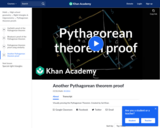
Visually proving the Pythagorean Theorem
- Subject:
- Geometry
- Mathematics
- Material Type:
- Lesson
- Provider:
- Khan Academy
- Author:
- Sal Khan
- Date Added:
- 09/22/2013


Visually proving the Pythagorean Theorem
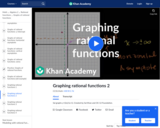
Another Rational Function Graph Example
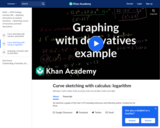
Using the first and second derivatives to identify critical points and inflection points and to graph the function.

This video is from the Khan Academy subject of Math on the topic of Calculus and it covers Antiderivative of hairier expression.

This video is from the Khan Academy subject of Math on the topic of Calculus and it covers Antiderivative of xcosx using integration by parts.

This video is from the Khan Academy subject of Math on the topic of Calculus and it covers Antiderivatives and indefinite integrals.

In this introduction, the instructor describes how to relate ratio to gears in a car transmission.
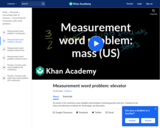
Application problems involving units of weight

Application problem with graph

The goal of this lesson plan from NCTM is to help students develop algebraic thinking skills. Several word problems requiring algebraic equations are included. Graphics calculators are also utilized in this lesson.
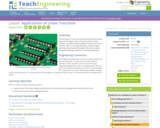
This final lesson in the unit culminates with the Go Public phase of the legacy cycle. In the associated activities, students use linear models to depict Hooke's law as well as Ohm's law. To conclude the lesson, students apply they have learned throughout the unit to answer the grand challenge question in a writing assignment.

In this video, the instructor demonstrates how to solve a radical equation.

Does the real-world application of science depend on mathematics? In this activity, students answer this question as they experience a real-world application of systems of equations. Given a system of linear equations that mathematically models a specific circuit—students start by solving a system of three equations for the currents. After becoming familiar with the parts of a breadboard, groups use a breadboard, resistors and jumper wires to each build the same (physical) electric circuit from the provided circuit diagram. Then they use voltmeters to measure the current flow across each resistor and calculate the current using Ohm’s law. They compare the mathematically derived current values to the measured values, and calculate the percentage difference of their results. This leads students to conclude that real-world applications of science do indeed depend on mathematics! Students make posters to communicate their results and conclusions. A pre/post-activity quiz and student worksheet are provided. Adjustable for math- or science-focused classrooms.
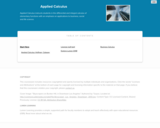
Applied Calculus instructs students in the differential and integral calculus of elementary functions with an emphasis on applications to business, social and life science. Different from a traditional calculus course for engineering, science and math majors, this course does not use trigonometry, nor does it focus on mathematical proofs as an instructional method.

The primary learning objective of this textbook is to introduce the reader to the fundamental statistical methods and basic analytical procedures associated with processing data in regard to healthcare research. It is intended that by working through the applications and practice problems, readers should be able to understand and apply some of the methods for developing, implementing, and applying healthcare statistic principles in research.
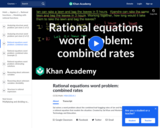
Applying Rational Equations 1
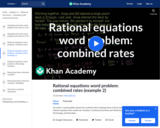
Applying Rational Equations 2
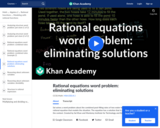
Applying Rational Equations 3
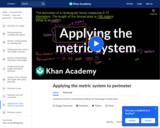
U06_L2_T3_we1 Applying the Metric System
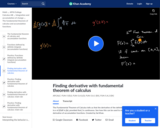
This video is from the Khan Academy subject of Math on the topic of Calculus and it covers Applying the fundamental theorem of calculus.